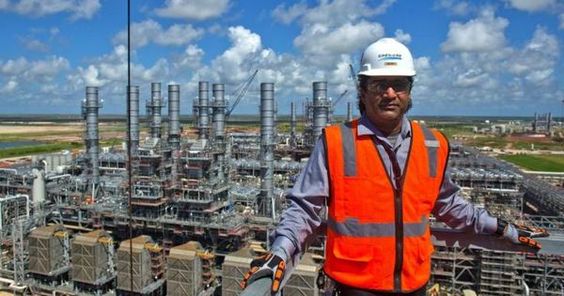 December 14, 2023
December 14, 20235 Proven Strategies to Boost Solar Sales Amid High-Interest Rates
5 Proven Strategies to Boost Solar Sales Amid High-Interest Rates
Recent challenges, such as inflation and supply chain disruptions, have contributed to escalating costs across various sectors, from car payments and groceries to energy prices.
In an era marked by the highest inflation rates since the early 1980s, consumers find themselves allocating more resources to meet essential needs.
For homeowners managing tightened budgets, delving into solar sales becomes a nuanced endeavor. This complexity is heightened by the simultaneous surge in interest rates, marking the end, at least temporarily, of zero-interest loans for solar system financing.
Why are loan rates rising?
In the dynamic landscape of solar sales financing, a comprehensive understanding of the recent surge in solar loan rates is vital for successful solar sales strategies.
While ongoing discussions often center around the escalation of interest rates, it’s crucial to delve deeper into their implications, particularly considering the pivotal role of the Federal Funds Rate as a representation of the cost of capital in the solar sales market.
During periods of low or zero rates, solar financing entities can extend loans at exceptionally favorable terms, as evidenced by the widespread popularity of 0% car and solar loans in 2020 and 2021, creating a prime environment for solar sales.
“In the low-rate landscape, the solar industry naturally leaned towards offering low, fixed APRs, reaching the pinnacle of this trend with the introduction of the 0%, 25-year loan,” showcasing lucrative opportunities for solar sales.
However, with the ascent of the Federal Funds Rate, solar financing companies face heightened capital costs, leading to a current trend featuring solar loans at rates ranging from 5-6% and beyond.
Should the Federal Funds Rate persist in its ascent, customers engaging in solar transactions can anticipate a corresponding increase in the interest rates they incur during solar sales transactions.
Spotlighting the Escalation in Utility Rates
Solar Sales
In the realm of life’s certainties—death, taxes, and the perpetual rise in utility rates—an age-old saying captures the essence of these inevitabilities.
This enduring truth holds firm in today’s landscape. As per the recent findings of the US Energy Information Administration (EIA) in its concise energy report, the average residential electricity price in the United States is slated to reach 14.9 cents per kilowatt-hour in 2022, marking an 8% surge from 2021.
The EIA projects a further escalation in electricity costs throughout

While 14.9 cents may seem economical for a kilowatt-hour to many, it’s worthwhile to explore regional specifics on this informative chart. Here’s a spoiler: Irrespective of your location, electricity prices have witnessed an increase and are poised for a likely continued upward trajectory.
In the face of these escalating energy expenses, it’s essential to note that, despite a potential increase in the cost of a solar loan compared to periods with lower interest rates, its inherent value could be even more substantial.
This is particularly true when considering the broader context of the continuous rise in energy prices.
There are a couple questions you can use to bring this home with homeowners:
- “Have you noticed a shift in your electric bill over the past few years?” For those without historical bills, leverage utility-rate data to offer insights. Extend the analysis over the system’s lifespan, revealing potential surprises—a process effortlessly automated by Aurora.
- “How soon do you anticipate reaching the break-even point?” Explore financing choices, including the specific one highlighted below, illustrating how a system can swiftly achieve positive cash flow. Often, payback periods defy homeowner expectations, presenting an opportunity for accelerated financial gains.
Ensure homeowners are informed about solar incentives.
While it’s natural for homeowners to prioritize concerns such as interest rates and inflation, it’s crucial to inform them about factors actively contributing to a reduction in the final cost of solar.
A key player in this realm is the Inflation Reduction Act (IRA), which, among its various benefits, prolongs the Solar Investment Tax Credit (ITC) until 2032 and reinstates its initial 30% value. (Previously, the ITC was set to decrease to 23% in 2023 and 10% exclusively for commercial use in 2024.)
Amidst the current high-interest rates and inflationary concerns, there’s a steadfast certainty: the ITC remains unaffected.
Despite the uncertainties in other financial aspects, the ITC’s continuity provides a stable anchor. When juxtaposed with elevated interest rates, the enhanced ITC renders solar more cost-effective for numerous homeowners compared to the original timeline when the ITC was slated for reduction.
Highlight resilience.
While a solar battery might not lead to immediate savings on energy costs for homeowners, its merits can surpass expenses, especially in critical situations.
For those residing in regions prone to frequent blackouts or grid failures, a solar + storage system becomes a lifeline, offering uninterrupted power—an invaluable feature that defies a straightforward price tag.
“As witnessed in events like Texas in 2021 and ongoing situations in California, the impetus to adopt solar often stems from the crucial factors of resilience and reliability,” notes Gilroy.
A noteworthy advantage is that solar + storage configurations result in larger and more impactful deals compared to standalone solar installations. The comprehensive nature of these systems caters to both energy needs and resilience, making them increasingly appealing in various areas.

LEAVE A REPLY